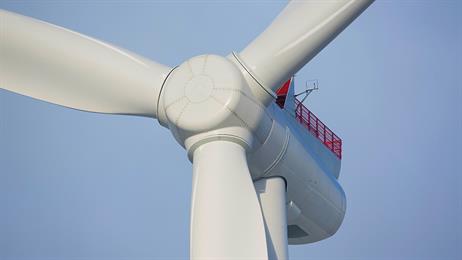By Jakob Askou Bøss Vice President, DONG Energy
When you switch on the power, you are probably not aware that almost 40 per cent of the electricity produced in Denmark comes from wind turbines. For the daily energy supply, it does not really matter that much because while we have one of the world's highest shares of wind power in the electricity supply, we also have one of Europe's highest security of supply. In Denmark, we have power in the sockets 99.997 per cent of the time and during the 20 minutes a year on average where we are affected by power cuts, it is primarily due to operational disruptions in the power grids.
One of the major reasons for Denmark’s high share of wind is offshore wind power which has existed for just 15 years when it comes to large-scale production. Offshore wind is a core part of the solution of reducing CO2 emissions and maintaining a reliable supply of energy. This requires that the cost of offshore wind is effectively reduced according to the expectations so that offshore wind power becomes fully competitive with other energy technologies.
In the past couple of months, the wind industry has shown that we are well on our way. In Denmark, Vattenfall won the right to construct Horns Rev 3 with a bid where the subsidy level, adjusted for inflation, is approximately 30 per cent lower than in 2010, which was the last time it was decided to construct an offshore wind farm in Denmark. DONG Energy also participated in the tender for the project, but we have to face the fact that we lost by a hair’s breadth to Vattenfall that will construct the offshore wind farm.
In the UK, where a large tender round covering future offshore wind projects has just been completed, the trend was the same with cost reductions of more than 30 per cent during the past five years.
Horns Rev is a step in the right direction
With a cost level in line with the level at which Horns Rev 3 is to be constructed, offshore wind power has taken a crucial step towards being competitive with fossil energy sources. We expect that further cost reductions will close the gap within the next ten years. This is much faster than we dared to hope for just a few years ago. This is not least the consequence of the fact that today, the market for offshore wind power has a size that makes it possible for all parts of the industry to invest in new capacity.
It is just as spectacular that it is a united industry working together to reduce costs. That was the conclusion of the international EWEA offshore conference for offshore wind power which was held at the Bella Center, in Copenhagen, in March 2015 with more than 8,000 participants.
One of the most important factors contributing to reducing CoE is the amount of capacity being constructed. The large number of ongoing projects gives companies the required basis to invest in mass production and technology development and thereby further reduce costs. This is most evident in the development of onshore wind power with its large-scale constructions since the late seventies and today, it has exceeded a global capacity of 350,000MW. The massive development of onshore wind power has meant that today, the costs for onshore wind power are even lower than for the fossil-based technologies.
What will be the framework after 2020?
When it comes to offshore wind power, a capacity of approximately 8,000MW has been installed worldwide; DONG Energy has installed approximately one-third of it. Towards 2020, the industry expects that just under 25,000MW will be installed. During the next six years, more than twice of the capacity will be installed compared to the capacity installed over the past 15 years.
The fact that the industry has transparency and certainty for the development in the coming years is crucial for the continued reduction of the cost of offshore wind power. Therefore, the important question is how the market will be after 2020, and how we ensure that the development rate and momentum are maintained so that we can take the last and vital steps which will make offshore wind power fully competitive.

